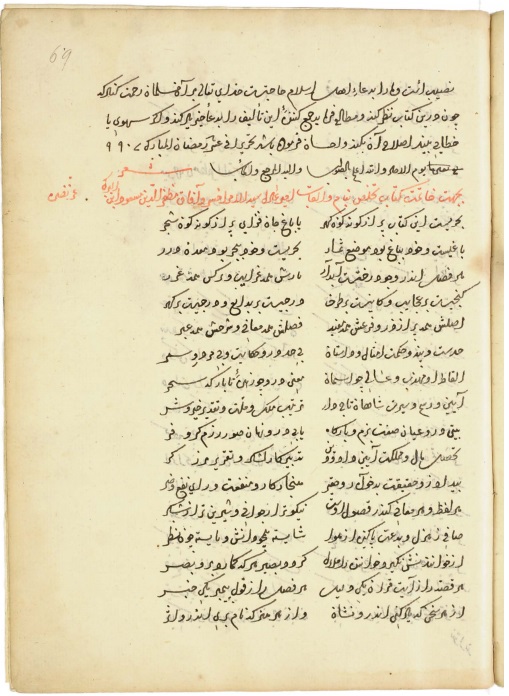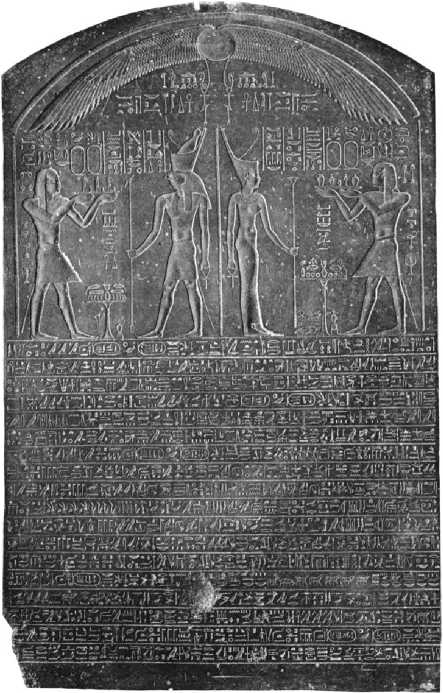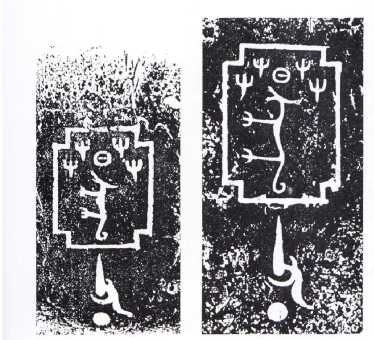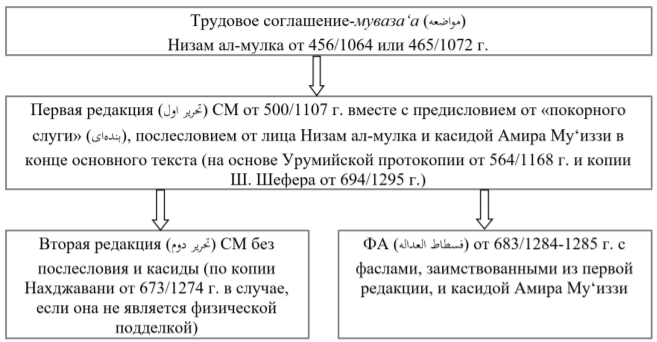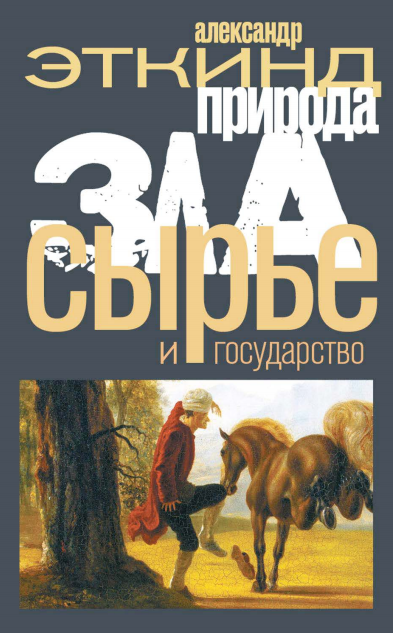Signed in the press on March 30, 2021.
HISTORY OF THE EAST. Historiography, source critical studies, historical research methods 
The article deals with the specifics of the formation of the ‘Dhāraṇīs Collections’ (Dhāraṇī-piṭaka) in the traditions of Mahāsāṃghika and Dharmaguptaka schools as well as the legitimation of these texts within the Buddhist Canon, regardless of the Abhidharma position that denied the practice of sacred formulas reciting as a Brahmanic heritage of the Vedic hymns proclaiming. The article examines the structural and formation features of Dhāraṇī-piṭakas both Mahāsāṃghika and Dharmaguptaka. It is pointed out that the ‘core’ of the Mahāsāṃghika’s “Spells Collection” was composed based on the texts representing the ‘autochthonous level’ of the religious practice (so called ‘folk magic’) that influenced the formation of both Buddhist (Mahāyāna) and Śaiva ‘pantheon’. The Dharmaguptaka’s dhāraṇīs, on the contrary, are distinguished by their reliance on the ‘mnemotechnical principles of the Buddhist syllabary-arapacana which were used in the prajñāpāramitā text's structure. Therefore, the Dhāraṇī-piṭakas of Mahāsāṃghika and Dharmaguptaka reflect both levels of the Buddhist doctrine functioning – the ‘popular level’ (Mahāsāṃghika) aimed to the favourable mundane existence and the high, ‘hieratic one’ (Dharmaguptaka) that has the goal of the obtaining of the final liberation – nirvāṇa.
The particularities in the political development of medieval Anatolia after the arrival of the Seljuq Turks in the eleventh century resulted in a singular scenario in which a long but steady process of Islamization transformed medieval Anatolia with the majority Christian population into a mostly Muslim territory by the end of the fifteenth century. However, this process of conflict and accommodation affected not only the different religions present in the peninsula but also those confessions that coexisted and competed with each another within each of these religions.
The religious diversity of the 13th to 15th cent. Anatolia has also reflected its textual production. Several significant works on kalam and fiqh, in addition to a variety of Sufi texts, were produced during this period. These works often deal with dogma, practices or traditions of their religious confession. But, generally, they do not offer much information on other religious confessions. The manuscript held at the Bibliothèque National de France (Supplément Turc 1120) contains a work which has been identified by Osman Turan as the Fustat al-‘adala and attributed to a certain Muhammad b. Muhammad al-Khatib. The uniqueness of this work is that a part of it is occupied with describing the different ‘heresies’ that were present in Anatolia at the time when the author lived, which appears to be during the lifetime of the last Seljuq Sultan of Rum, Ghiyath al-din Mas‘ud (d. 1308 AD). This introduction will look at this manuscript from both a codicological and thematic perspective. On the one hand, I will discuss certain aspects related to the production of the codex, its authorship and potential patronage. While on the other, the section on heresies contained in the text will be examined to explore what this work can tell us about the religious environment of medieval Anatolia.
HISTORY OF THE EAST. Universal history 
The authors examine the relationship between Dzungaria and Tibet in the first half of the 18th century. A whole series of events that happened in these countries coincide chronologically in a rather surprising way. The authors highlight the important events of this period: the seizure of Lhasa by the Dzungars in 1717–1720, the uprising of the Kukunor Khoshuts in 1723–1724, the development of Dzungar-Tibetan relations in the second quarter of the 18th century. They stress the Galdan-Tsereng’s embassy to the Dalai-lama in 1742/1743, the event, which was mentioned even in the Russian archival documents. Besides, they pay special attention to the activities of the main leaders, such as Dzungarian hungtaiji: Tsewang-Rabdan, Galdan-Tsereng; Tibetan rulers: rgyal-po Lhawzang, miwang Pholanay, the Dalai-lamas Sixth and Seventh; the Qing emperors: Kangxi, Yongzheng, Qianlong. They quote the letters exchanged between the Qing emperors, on the one hand, and the Dzungar (and Khoshut) leaders, on the other. The authors concluded that the relations between Dzungaria and Tibet during the first half of the 18th century could be subdivided into three stages (1703–1717; 1717–1727; 1727–1745/1750, each with its peaks). These relations, as well as their development, largely depended on the state of the relations between the dynasty of Qing and Tibet, especially the imperial policy towards Dzungaria.
The article deals with controversial fragments of the Satrap Stela. The examination of the sign in line 9 suggests that its phonetic value was sbj. This led to the grammatical reassessment of the translation in lines 8–9 as “... before <it> (=the Marshland Wadjet) passed into the possession of the rebel Xerxes”. Furthermore, the double meaning of Horus’ epithet HA.t/HA.t(.j) nTr.w xpr Hr-sA in line 11 was suggested. On the one hand, this phrase highlights Horus as the primeval god of creation in Buto. On the other hand, he was considered to be the son of Isis and Osiris, one who came into being later than the other gods, but became the supreme god. Moreover, controversial signs were regarded as the phrase (@r.w... Hr) wd nf sbj(.w). If so, the translation of line 11 may be “(Horus)... overthrew those rebels (namely) Xerxes in his palace and his elder son”.
This is a commented translation into Russian of three inscriptions on the ancient Chinese bronze vessels from the late Shang-Yin period (end of the 2nd millennium BC). The inscriptions found on bronze vessels constitute a special kind of sources for the ancient history of China. These epigraphic documents provide important, otherwise unrecorded data on life in the archaic society. Contrary to the texts of classical works, the nature of the ancient Chinese bronze inscriptions is ritualistic. They were not intended to be “read” but served as a tool of sacred communication with the world of dead ancestors. In fact, their “readers” were otherworldly forces. The correct understanding of these bronze inscriptions requires a specialist commentary. The publisher includes the inscriptions on the late Shang-Yin ritual vessels into a wide historical and cultural context. It is hoped this context will facilitate the understanding of the inherent meaning of the inscriptions. The comments will outline the range of problems associated with the interpretation of this type of sources from the late Shang-Yin period.
HISTORY OF THE EAST. Philosophy of Religion and Religious Studies 
Over the long centuries and nowadays the historical concept and political status of Jerusalem remain the most acute problem of relations between the peoples and states of the Middle East, Arabs and Jews, Israel and the Arab Palestinian state. The poignancy of the problem, the arguments of the opposing sides, are mainly rooted in conflicting interpretations of the history of Jerusalem and its holy places. The article presents a view of the history of Jerusalem as a process that began before the formation of the historical consciousness of the Arabs and Jews but used to continuously influence its shaping during the struggle for the city between powerful political forces standing behind the claims of various congregations. The article examines the written evidence of the shrines of Jerusalem that existed before the construction of the First Temple; selected archaeological data are used for additional verification of written sources. Recent proposals for a solution to the political status of Jerusalem are placed in the context of ideas about its cultural and historical significance. Particular attention is paid to the importance of Jerusalem in the history of the formation of religious doctrine and ritualism in Islam; a distinctive opinion is substantiated by the author concerning the reasons of the initial orientation of the Muslim prayer ritual towards Jerusalem; the existence of perceptions of the shrines of Jerusalem as sacred objects, recognized in the religious and ritual traditions of the Semitic peoples – the ancestors of Jews and Arabs – is established. On the ground of research findings the inseparability of history, culture, spatial limits and political status of the city of Jerusalem as an organic whole and a system is argued, the breach of the balance of which is claimed to inevitably destroy the integrity of the characteristics of Jerusalem in the history of the region, various peoples and all of humanity. The search for a solution to the Jerusalem problem is seen as interaction and the development of a model that recognizes and balances three factors of influence: 1) ideas about the importance of Jerusalem in the national historical narrative of Arabs and Jews; 2) the concept that asserted the consideration of the beginning of the cultural history of Jerusalem as a common Middle Eastern religious centre; and 3) the range of various political solutions proposed for the settlement of the problems of disputed territories in international relations with the assumption of the feasibility of fundamentally new models of solution.
LITERATURE OF THE EAST. Theory of literature. Textology 
The bureaucratic system of the Great Saljuqs (431–552/1040–1157) reached the apogee of its development in connection with extensive conquests and the need to effectively manage the conquered territories. This system was later preserved by their Anatolian successors (c. 483–707/1081–1308), along with the methods of climbing the administrative career ladder. Along with the hereditary succession in government appointments, the making of literary forgeries, hidden plagiarism and the deliberate editing of texts written by other people occupied not the last place among these methods in order to obtain a high position at the Saljuqid сourt. These methods clearly characterize both the genre of administrative literature and the authors who worked in it. The structure and content of their compilations in this genre directly depended on the vacancies they applied for.
The Fustat al-‘adala organically fits into a number of other texts written in the genre of administrative literature in the Saljuqid era. As shown by the textual analysis in this article, the Fustat al-‘adala’s compiler resorted to hidden plagiarism of voluminous fragments from sources of different genres, as well as to their deliberate editing in order to get a position at the сourt of Muzaffar al-din b. Alp Yurak (d. 691/1292) who was the military commander and ruler of the Chobanids beylik with its administrative center in Kastamonu.
One of the basic sources for this compilation was the first redaction of the Siyar al-muluk (Siyasat-nama), which was fabricated by Amir Mu‘izzi about 185 years before and ascribed by him to Nizam al-mulk also with the aim of obtaining a high position at the Saljuqid сourt.
LITERATURE OF THE EAST. Folklore studies 
The scholarly study of Chinese folklore began in the middle of the 19th century. Pioneering research had been conducted by Europeans, who were familiar with current works in this area and gained access to the field, archival and book sources in different regions of China. Among the first people who embarked on the study of Chinese folklore was a British journalist and diplomat Nicholas Belfield Dennys. In 1876, he published the monography of Chinese folklore studies: “The folk-lore of China, and its affinities with that of the Aryan and Semitic races”. His goal was to view Chinese folklore in a global context; for its implementation, he compiled the first elementary index of plots and motifs of Chinese folklore. The Chinese themselves commenced the academic study of the folklore of China several decades later, relying largely on the developments of their European predecessors. In the 1920s, the book by Dennys became known in China, however, it had little impact on Chinese folklore studies for the reasons as follows. The data the book comprised was for the most part not new to researchers in China, the method used to compile the index was known to them earlier, and comparative studies in the region were in their cradle at this time. In the West, up to the middle of the 20th century, Dennys’ book was often consulted in search of comparative Chinese material. Nevertheless, some of the author’s finds have never received further developed. The place of this work in the history of the comparative study of Chinese folklore also remained rather uncertain. This article describes the context in which “The Folk-Lore of China” appeared, examines the author’s methodological premises, as well as the role of his findings in the further development of folklore studies.
PHILOSOPHY OF THE EAST. Philosophy of religion and religious studies 
The article deals with the specific features of the interpretation of the sallekhanā ritual in the context of the philosophical, ethical and religious doctrine of Jainism based on the analysis of disciplinary texts for monks and laity. The author stresses the ethical ambiguity of this practice from the point of view of modern legal norms and emphasizes that the idea of a worthy “good death” through gradually increasing fasting in Jainism is based on the key idea of non-violence (ahiṃsā) for this tradition, including the prohibition of self-harm. For an adequate understanding of sallekhanā in the context of Jain ethics is necessary to take into consideration who (which person – the factor of the subject), how (in which way – the factor of method), when (at what time – the factor of time), why (on which reason – the factor of purpose) and where (in what place – the factor of place) makes it. It is only with proper preparations and in keeping all the requirements it could be reckoned as the ethically right way to finish a properly (i.e. according to all the precepts of Jain doctrine) lived life both for monks and laypeople. In this case, sallekhanā could be considered as a Jain solution to the moral dilemma of the entire Western European philosophy about whether an individual has the right to leave life independently.
Historians have for long ignored the human body as a theme of inquiry. While there cannot be a history of the biological body, there is tremendous scope for enquiring into the religious, social and cultural attitudes towards this body. Recently, the female body impinged on our collective consciousness in the context of the Sabarimala temple entry controversy. The debate which this issue generated gives me an entry point to examine the gendered nature of social institutions, their normative injunctions, and their cultural symbolism within the wider Sanskritic / Brahmanic traditions, since it was precisely the bias of this tradition that labelled the presence of females of a particular age group as not only polluting but also presenting a threat to the seclusion of a brahmachari deity who presided over this temple complex. By analyzing a wide corpus of Sanskrit textual tradition, I seek to argue that female and male bodily secretions are represented asymmetrically and sought to degrade woman by representing her as a site of revulsion.
PHILOSOPHY OF THE EAST. History of philosophy 
The article offers a historiographic survey followed by an assessment of a big-scale discussion, which deals with the “new interpretations” of the famous fragment − “Stealing a ram” from the “Analects” (Lun Yu, 論語) a large collection of sayings and ideas attributed to the Chinese philosopher Confucius and his contemporaries (Analects, 13.18). The origin of the Analects dates back over two millennia. Regardless of “advanced age” it does still attract within the Chinese society significant attention and is discussed both by the scholarly and public audience. In general, this discussion remains recurrent. The discussion unfolded in the Peoples Republic of China in 2000–2016 was covered by numerous articles in the American scholarly literature and therefore has found a vivid response among the Sinologists within the English language milieu. The author asks a question whether these recent interpretations as came from the 2000-2016 discussion are innovative indeed or they just “rephrased” old approaches already recorded in the scholarly literature. To answer it, he compares the key approaches by the modern Chinese scholars to those by Russian Sinologists, particularly, the interpretations by Professor Lydia I. Golovacheva (1937–2011). According to her, the famous sentence “a father would [plead guilty to] cover a son, a son would [plead guilty to] cover a father” implies the idea of correction of the wrongdoings (“upright the crooked”) using the internal moral imperative or waking the conscience of the wrong person. The analysis of the debates held by the scholars from the Peoples Republic of China has revealed the need to bring back into circulation this relatively little-known, however, holistic, consistent and adequate interpretation as well as to increase the awareness of it among both Russian and foreign sinologists. According to the author, this interpretation removes all the alleged legal vs. moral contradictions in the fragment (Analects 13.18).
CHRONICLE. Reviews 
The focal point of the book under review is Europe as well as its interaction on the level of supply of resources with other regions of the world, primarily with the East. The author expands the usual notion of the “East”. He extends its boundaries to the regions, which supplied Europe with resources, starting with the actual East and extending it to the European North and even America. The author identifies a change in the main types of resources supply, from the wood and other commodities followed by luxury goods and energy carriers. The author shows a special interest in the influence of resource exchange on social processes in Europe and the East, as well as the formation of European academic economic thought. He also pays special attention to environmental problems related to the resource economy.
CHRONICLE. Conference report 
The article lists the milestones of the “State and Society in China” annual conference since 1970 traditionally held by the China Department of the Institute of Oriental Studies of the Russian Academy of Sciences (Moscow). This is Russia’s most prominent Sinological conference. Within the three days, scholars discuss various issues of history, philosophy, politics, the law in medieval and modern China. Regardless of the outbreak of the COVID-19 the 50th anniversary conference (December 23–25, 2020) was still held in Moscow, however, online. The conference was held as part of the implementation of the action plan of the Ministry of Science and Higher Education of the Russian Federation of the cross years of Russian-Chinese Scientific, Technical and Innovative Cooperation. The article also comprises a brief overview of the last event and summarizes the results of the conference materials published in the collection under the joint title “State and Society in China” from 1970 to 2020.
ISSN 2687-0738 (Online)




